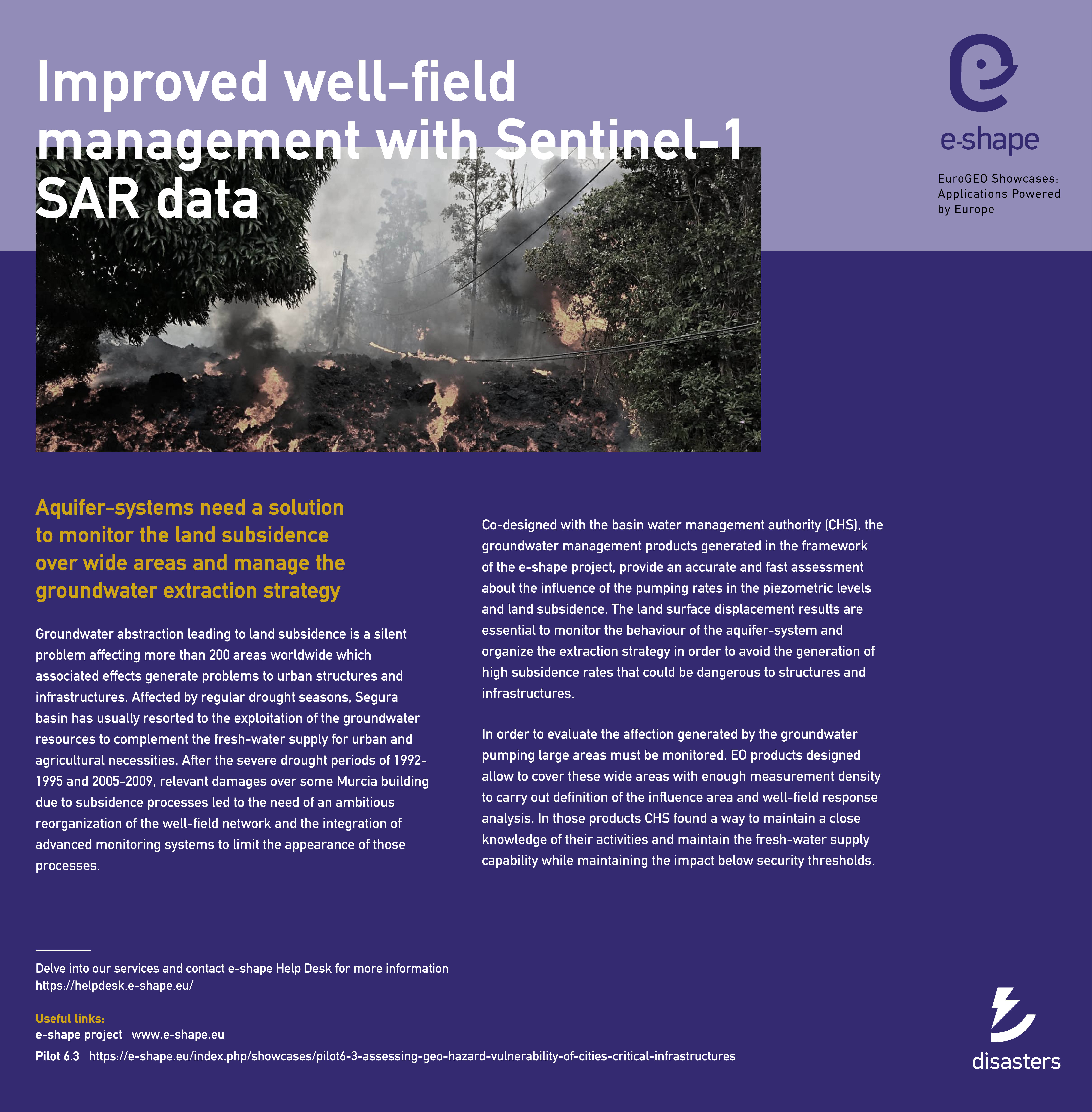Pilot6 | EO-based surveillance of POPs pollution
Pilot 6.3 | Assessing Geo-hazard vulnerability of Cities & Critical Infrastructures

Cities account for most of the population in Europe being the engines of the economic growth, but also posing the greatest environmental, social, political and cultural challenges. In order to address them the Urban Agenda for the EU (ratified in May 2016) focuses on priority themes as to improve the quality of life in urban areas; promote the cooperation between cities in the different member states to stimulate growth and innovation; and identify good projects that can be scaled up and transferred across the EU.
Furthermore, the UN SDG Goal 11 “make cities inclusive, safe, resilient and sustainable” aims, among others, to significantly reduce the human and economic losses caused by disasters, with a focus on protecting the people in vulnerable situations. In order to develop safer and more secure cities, products and services exploiting Earth Observation technologies can be used to map vulnerable urban areas that could be potentially affected by geo-hazards.
/ Objectives
- To increase the use of multi-mission Earth Observation derived products and services to assess Urban Vulnerability and Geohazards.
- To systematically map vulnerable urban areas and critical infrastructures threatened by Geohazards.
- To raise early awareness and train key users and decision makers on the use of the EO derived products and services and increase urban resilience against geo-hazards.
/ Partners
EGS, EU SATCEN, Planetek
/ Key Users
Urban planners and managers, Policy Makers, Industry and engineering companies, Insurance companies, Civil protection authorities, Urban citizens, EU Entities, Member States
/ Key Datasets
ESA satellites Sentinel 1A/B images are the core data for this pilot area.
In situ data: GNSS stations for validation, geological and Geohazard layers are available from the Geological Surveys and urban layers from the Local Authorities.
Information layer: pipeline network layers.
/ ID Card
The pilot will generate a working methodology to provide four final products /reports based on Interferometric SAR data. Those products of added value will allow to technical (InSAR processing and Validation products) and non-expert (Active Geohazards areas and Urban vulnerability products) to improve the resilience of cities and infrastructures against geohazards. The methodology will be tested in different test sites and geological risks in order to fit it to them.
Stay in the loop !
Acknowledgment
The e-shape project has received funding from the European Union’s Horizon 2020 research and innovation programme under grant agreement 820852






